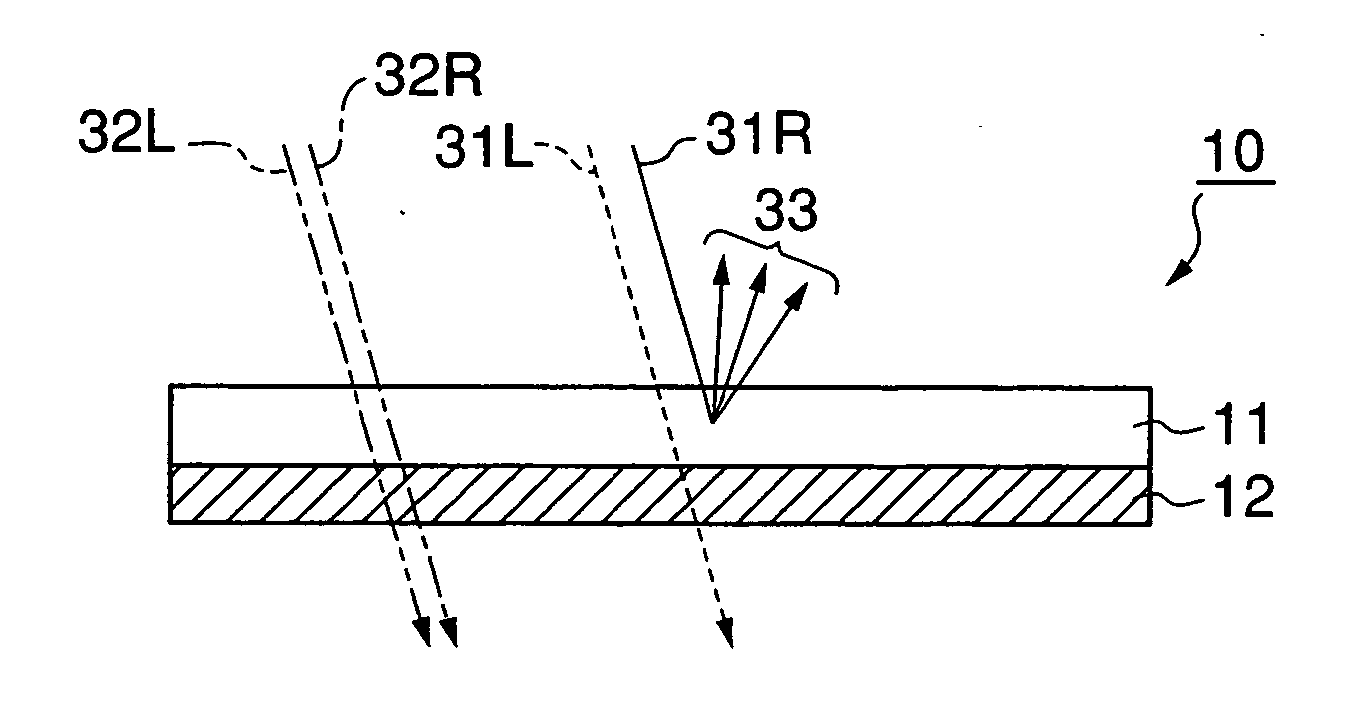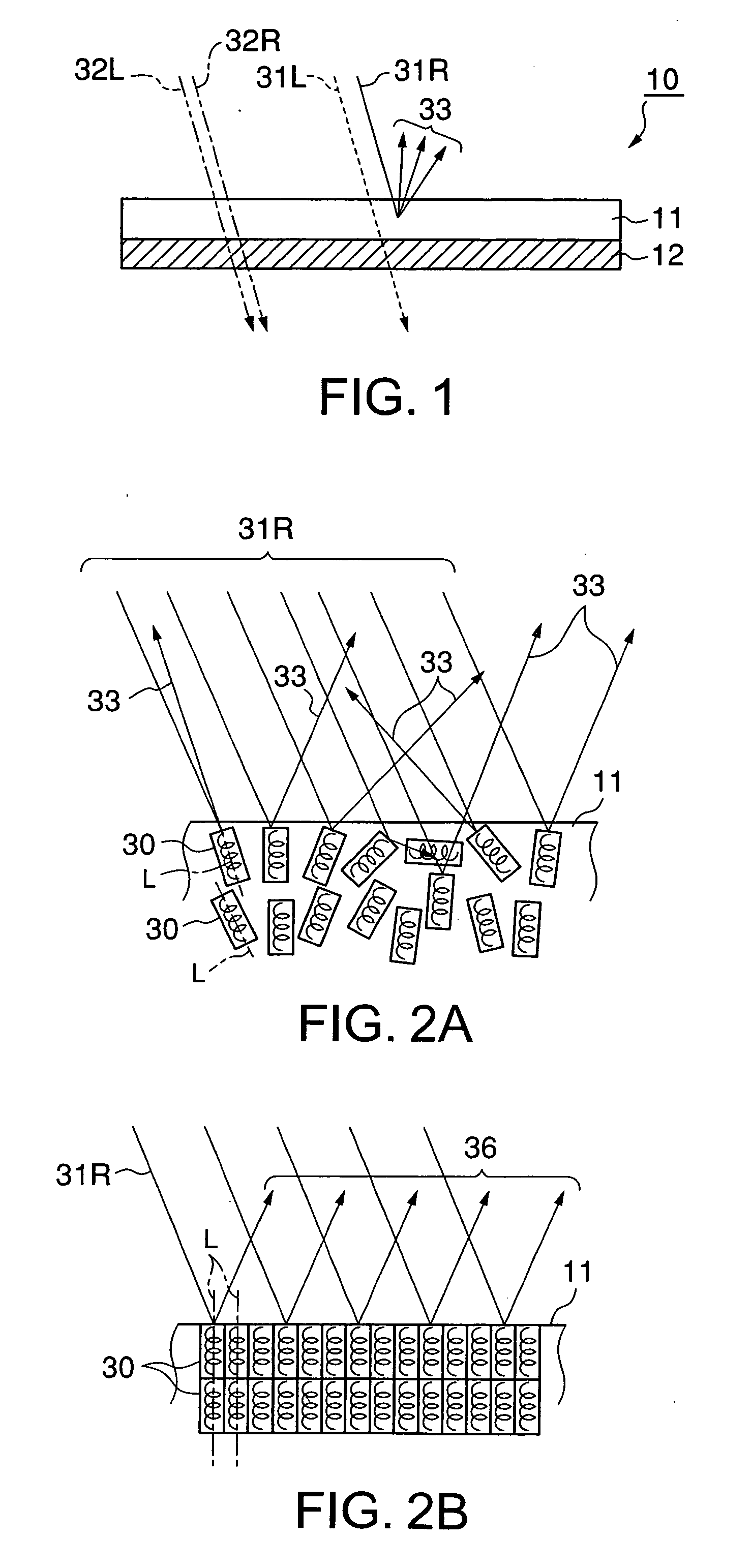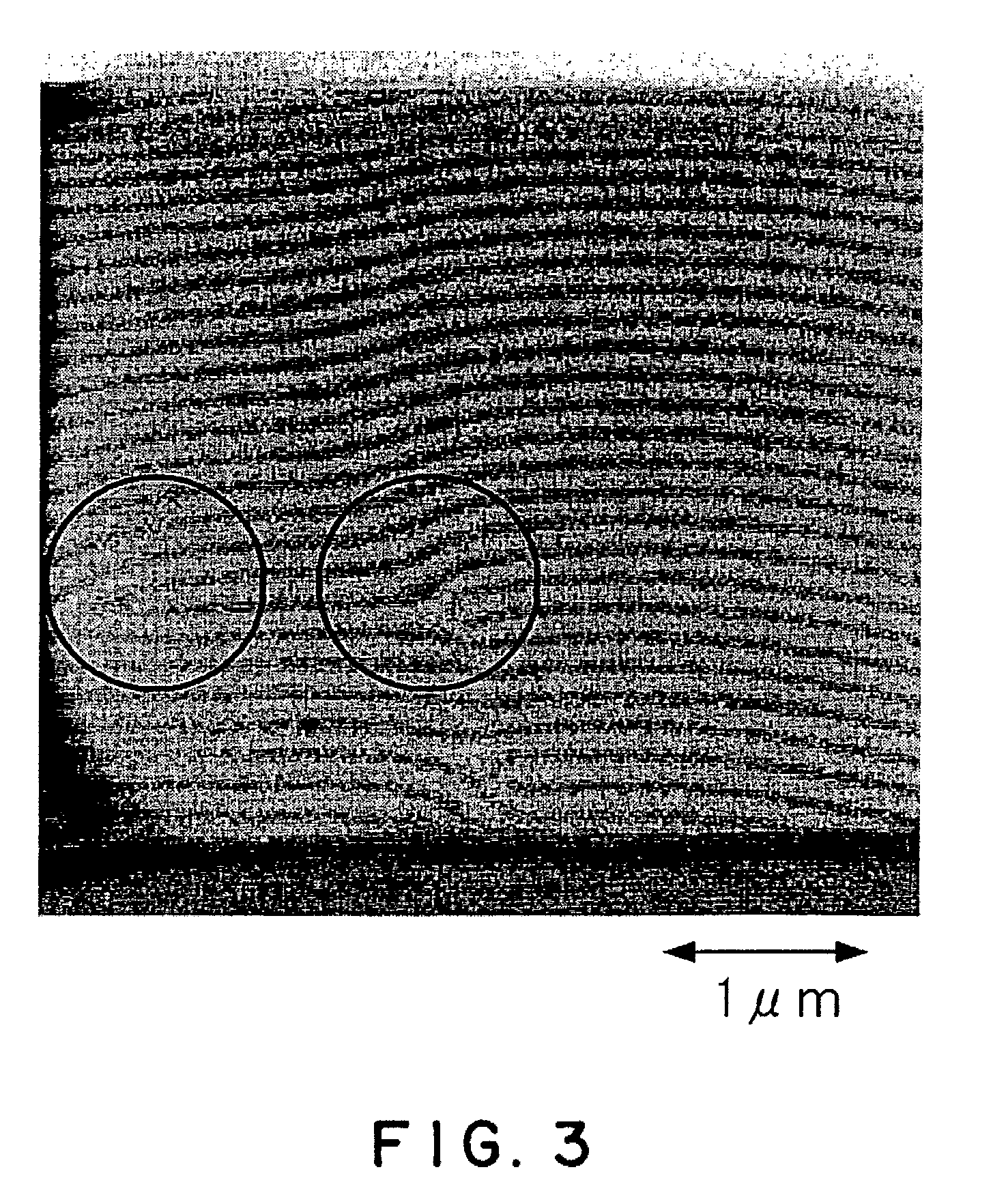Projection screen and projection system containing same
a projection screen and projection system technology, applied in the field of projection systems, can solve the problems of insufficient image display performance of conventional projection screens, inability to provide good image display, and projection screens using holograms can only display images with limited sharpness, so as to achieve enhanced image contrast, efficient reflection, and improved image visibility
- Summary
- Abstract
- Description
- Claims
- Application Information
AI Technical Summary
Benefits of technology
Problems solved by technology
Method used
Image
Examples
example 1
[0207] A first cholesteric liquid crystal solution having a selective reflection wave range centered at 440 nm was prepared by dissolving, in cyclohexanone, a monomer-containing liquid crystal consisting of a main component (94.7% by weight), an ultraviolet-curing nematic liquid crystal, and a polymerizable chiral agent (5.3% by weight). A liquid crystal containing a compound represented by the above chemical formula (2-xi) was used as the nematic liquid crystal. A compound represented by the above chemical formula (5) was used as the polymerizable chiral agent. To the first cholesteric liquid crystal solution, 5% by weight of “Irg 369” available from Ciba Specialty Chemicals K.K., Japan was added as a photopolymerization initiator.
[0208] By a bar coating method, the above-prepared first cholesteric liquid crystal solution was applied to a substrate (“LUMIRROR / AC-X” manufactured by Panac Co., Ltd., Japan) that was a black-colored PET film with a surface area of 200 mm×200 mm, havin...
example 2
[0216]“ADEKA Optomer KRX-559-7” manufactured by ASAHI DENKA KOGYO K.K., Japan was prepared as a material for forming a hard coat layer, and was applied, by a bar coating method, directly to the polarized-light selective reflection layer in the projection screen obtained in Example 1. This coating film was dried at 80° C. for 5 minutes and was then cured by the application of 750 mJ / cm2 of ultraviolet light, thereby forming a hard coat layer with a thickness of 5 μm. There was thus obtained a projection screen containing the hard coat layer laminated to the polarized-light selective reflection layer. The surface hardness of the hard coat layer in the projection screen obtained in this manner was measured. As a result, the pencil hardness of the hard coat layer determined in accordance with JIS K5400 was found to be 2H or more.
example 3
[0217]“ZR-100 (trade name)” manufactured by Sumitomo Osaka Cement Co., Ltd., Japan was prepared as a material for forming an ultraviolet-absorbing layer, and was applied, by a spin coating method, directly to the polarized-light selective reflection layer in the projection screen obtained in Example 1. This coating film was dried at 80° C. for 1 minute, thereby obtaining an ultraviolet-absorbing layer whose thickness was approximately 2 μm. Thus, there was obtained a projection screen in which the ultraviolet-absorbing layer was laminated to the polarized-light selective reflection layer.
PUM
 Login to View More
Login to View More Abstract
Description
Claims
Application Information
 Login to View More
Login to View More - R&D
- Intellectual Property
- Life Sciences
- Materials
- Tech Scout
- Unparalleled Data Quality
- Higher Quality Content
- 60% Fewer Hallucinations
Browse by: Latest US Patents, China's latest patents, Technical Efficacy Thesaurus, Application Domain, Technology Topic, Popular Technical Reports.
© 2025 PatSnap. All rights reserved.Legal|Privacy policy|Modern Slavery Act Transparency Statement|Sitemap|About US| Contact US: help@patsnap.com



